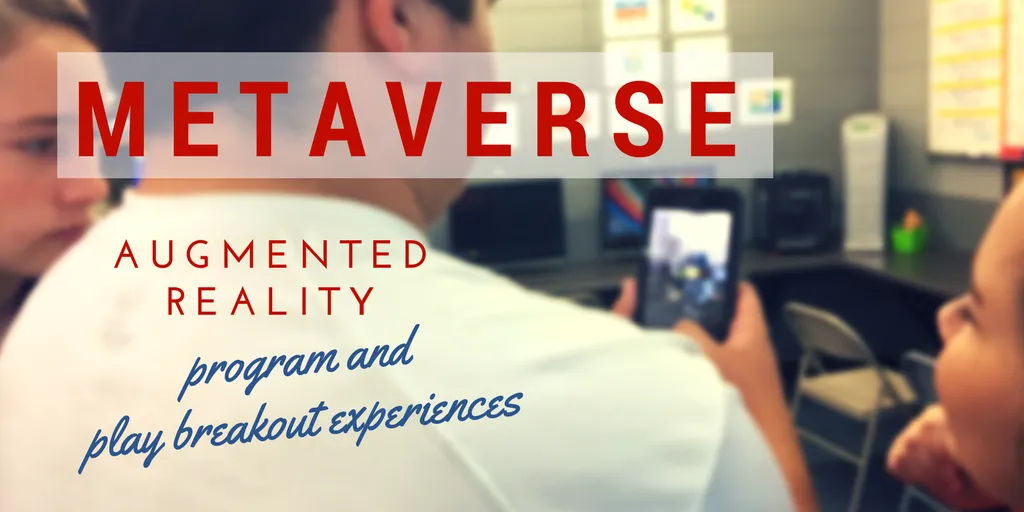
What The Heck Are The Metaverse And Augmented Reality? Let’s Dive In And Figure Out The Differences!
As technology advances, we hear more and more buzzwords thrown around, and it can be hard to keep up with what’s what. Two terms that are often used interchangeably but are actually quite different are the “metaverse” and “augmented reality.” In this article, we’re going to explore what these terms mean, how they differ, and why they matter.
What Is The Metaverse?
The metaverse is a term coined by science fiction author Neal Stephenson in his 1992 novel “Snow Crash.” In the book, the metaverse is a virtual reality space where people can interact with each other and digital objects in a fully immersive way. Think of it as the ultimate social network, where you can hang out with friends, attend concerts, and even do your shopping without ever leaving your house.
In recent years, the concept of the metaverse has become more and more relevant as technology has advanced. With the rise of virtual reality and augmented reality, it’s now possible to create immersive digital experiences that feel almost as real as the physical world.
What Is Augmented Reality?
Augmented reality, or AR, is a technology that overlays digital information onto the physical world. You may have experienced AR without even realizing it – think of the Snapchat filters that add bunny ears or a dog nose to your face, or the Pokemon Go game that superimposes digital creatures onto your real-world surroundings.
AR can be used for practical purposes, too. For example, you could use an AR app to see how a piece of furniture would look in your living room before you buy it, or to get directions overlaid onto the streets as you walk.
What Are The Differences Between The Metaverse And Augmented Reality?
At first glance, the metaverse and augmented reality might seem similar – after all, they both involve digital experiences that interact with the physical world. However, there are some key differences between the two.
The metaverse is a fully immersive virtual reality space, while augmented reality adds digital elements to the real world. In the metaverse, you’re completely immersed in a digital environment, while AR still allows you to see and interact with the physical world around you.
Another difference is the level of interactivity. In the metaverse, you can interact with other people and digital objects in a way that feels almost as real as the physical world. With AR, the digital elements are more limited – they might appear on your phone screen, for example, and you can’t physically interact with them in the same way.
Why Do The Metaverse And Augmented Reality Matter?
So, now that we know what the metaverse and augmented reality are, why do they matter? Well, for starters, they represent a major shift in the way we interact with technology and each other. As these technologies become more advanced, they have the potential to completely change the way we live, work, and play.
In the metaverse, for example, we could see a world where people no longer need to commute to work – instead, they could attend meetings and collaborate on projects in a fully immersive digital environment. And with augmented reality, we could see a world where we no longer need to carry around physical maps or rely on GPS – instead, we could have directions overlaid onto the world around us.
Of course, there are also potential downsides to these technologies. As we become more immersed in digital environments, we may lose touch with the physical world, and there are concerns about privacy and security as well.
Conclusion
In conclusion, the metaverse and augmented reality are two exciting and rapidly evolving technologies that are changing the way we interact with the world around us. While they may seem similar at first glance, they are fundamentally different – the metaverse is a fully immersive virtual reality space, while augmented reality overlays digital elements onto the physical world.
As these technologies continue to evolve, it will be interesting to see how they shape our lives and the world around us. Will we fully embrace the metaverse and spend all our time in a digital world, or will we find a balance between the virtual and physical? Only time will tell.
Email- contact@devopsschool.com

 Starting: 1st of Every Month
Starting: 1st of Every Month  +91 8409492687
+91 8409492687  Contact@DevOpsSchool.com
Contact@DevOpsSchool.com
